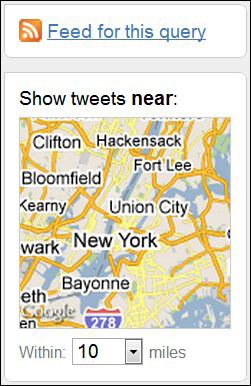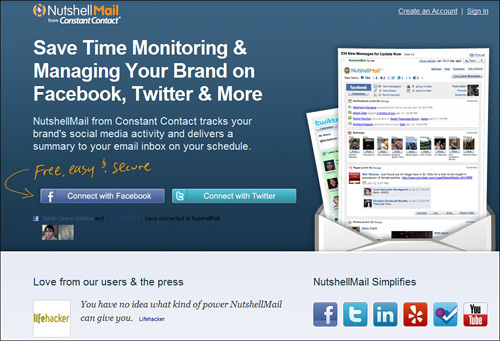10. Step 1: Listen First, Engage Second
Many define an interactive marketplace as a modern-day phenomenon, based on the uptake of social media marketing tools that have shifted the way marketers find and engage with their customers. But in fact, interactive marketplaces have been in existence for as long as communication itself. However, there has been a shift from direct, face-to-face transactions to the indirect interactions of the Internet that enable our businesses to span the globe and virtually manage thousands of accounts without needing to employ thousands of staff members.
Some will argue that this, too, is far from new. After all, interactive technology that allowed business to be conducted instantly, yet remotely, took off with the invention of the telephone. What has changed, and what is continuing to evolve with the help of online technology, is the consumer’s relationship with a brand. The process is moving from a transaction-based effort to a conversation, where the customer has the ability to interrupt and modify a brand’s message through new media intervention.

Monologue Versus Interactive Communication
A business or brand that communicates with its consumers purely through one-way media can be said to be employing monologue-based marketing, which probably won’t be heard actively by its audience due to the fact that it’s basically a business voice that’s spouting a particular message such as “Buy this now,” “Trend this,” or “Click here to visit our site.” It doesn’t work and leaves today’s respondents asking “Why should I?” The marketers have forgotten that promotion today begins and ends with building and sustaining trust. Interactive communications, on the other hand, take place when both sides pay attention to the other and a dialogue is struck between them. As with all forms of communication, the best dialogue happens when we listen to what the other party is saying before we respond. Don’t be the first to dive in with your sales pitch. Instead, sit back, observe the market, and listen. It’s one of the most valuable tricks that anyone who wants to build a social media presence can master, and yet it’s one of those practices that many businesses still choose to forget.
It’s important to remember that social media is not about technology; it’s about communication. The technology behind today’s social media is just a mechanism that facilitates our exchange of ideas.
Remember that the technology behind social media is just a mechanism that facilitates our exchange of ideas.
Learning How to Listen
So the first step to success in social media is listening. But how do we manage to tune in to millions of blogs, tweets, and messages and so on? “Surely there aren’t enough hours in the day,” we hear you cry!
It’s actually easier than you might think. There are some wonderful listening and Share of Voice (SoV) tools and services out there that do all the trawling for you and find the snippets of information you need to pay attention to. There are many to choose from, some free and some available on a subscription fee basis. Here are some of the most popular and effective options to get you started.
Google Alerts
Google Alerts allows you to search for your brand or company name (or any competitors for that matter) to find out what is being said about you (or them). Just sign in to your Google account, go to google.com/alerts, and type in a search for your particular brand or company name (see Figure 10-1).
Figure 10-1. Google Alerts offers listening device options.
(Source: Google.com)

Select Everything as the type and Once a day or As it happens for how often. Finally, select the email address that you want the results delivered to. Now follow the same procedure for other keywords relating to your industry. You’ll get an email once daily for each alert. Click the links and see what people are saying about you, your competitors, and your industry in general.
You’ll no doubt need to refine your search terms based on the number of irrelevant links you get. For instance, a search for candy apples might yield lots of posts about fruit or even posts about people by the name of Candy. By adding quotation marks in the search term (“candy apples” rather than candy apples), you’ll get far more relevant results.
Twitter Advanced Search
Twitter Search is a great tool for increasing your local customer base as well as checking out what the general buzz is about your industry. Over time, this tool enables you to build up your account with potential customers located nearby by using advanced search features, including geo-targeting. You can search by location as well as area of interest and focus on building relationships with those closest to you.
Listening is the most important step to success in social media.
To get started, log in to Twitter’s Advanced Search (see Figure 10-2) and start with some geo-targeted keyword searches. For example, if you’re interested in finding people in New York who are into wine, you might search for the following: “wine bar” near: “New York city” within: “10 miles.”
Figure 10-2. Twitter’s Advanced Search options.
(Source: Twitter.com)

The results page will be filled with relevant potential followers (and competitors), giving you some insight into what people are both tweeting about and searching for (see Figure 10-3).
Figure 10-3. Example results found using Twitter’s Advanced Search option.
(Source: Twitter.com)

Experiment by trying out different combinations of keywords and search radii until you find the most relevant results for your business. You can then automate this process by subscribing to the search feed using Really Simple Syndication (RSS) as shown in Figure 10-4, which will enable you to view the results every day in your feed reader.
Figure 10-4. Receive daily updates by clicking the RSS feed link: “Feed for this query.”
(Source: Twitter.com)

Technorati
Technorati is a first-class blog search tool that helps you track keywords used in blogs and, once you start blogging yourself, allows you to keep an eye on any posts out there that are similar to yours (see Figure 10-5).
Figure 10-5. Technorati is the definitive blog search tool.
(Source: Technorati.com)

Technorati uses an easy interface. Each blog offers a link to an RSS feed, so you can easily track its entries as they are posted. Again, this provides an invaluable way to find the material others are posting and allows you to engage in a way that answers the questions being asked by your particular industry and, more importantly, its consumers.
It’s important not to bombard yourself with too many tools. Stick with a few really good ones to keep you informed and updated. You might want to use a fee-based, all-in-one tool such as NutshellMail (Nutshellmail.com), shown in Figure 10-6. This monitors your brand on all the popular social media platforms, including LinkedIn, Facebook, Twitter, and YouTube. It may work out to be the best long-term solution for you, but we feel it’s worthwhile to spend some time getting to know the individual free tools to familiarize yourself with the various search and RSS feed mechanisms.
Figure 10-6. Paid search tools such as NutshellMail provide a comprehensive listening service that covers all major social media platforms.
(Source: Nutshellmail.com)

Organizing Your Findings for Maximum Benefit
So you’ve been listening carefully and now your business has accumulated a steady stream of information pertaining to your industry sector in general. You have it! It’s all there, but what exactly do you do with it, and how can you use it to help build an effective social media strategy?
Now it’s time for Step 2: Understand and Build Your Social Media Voice.

